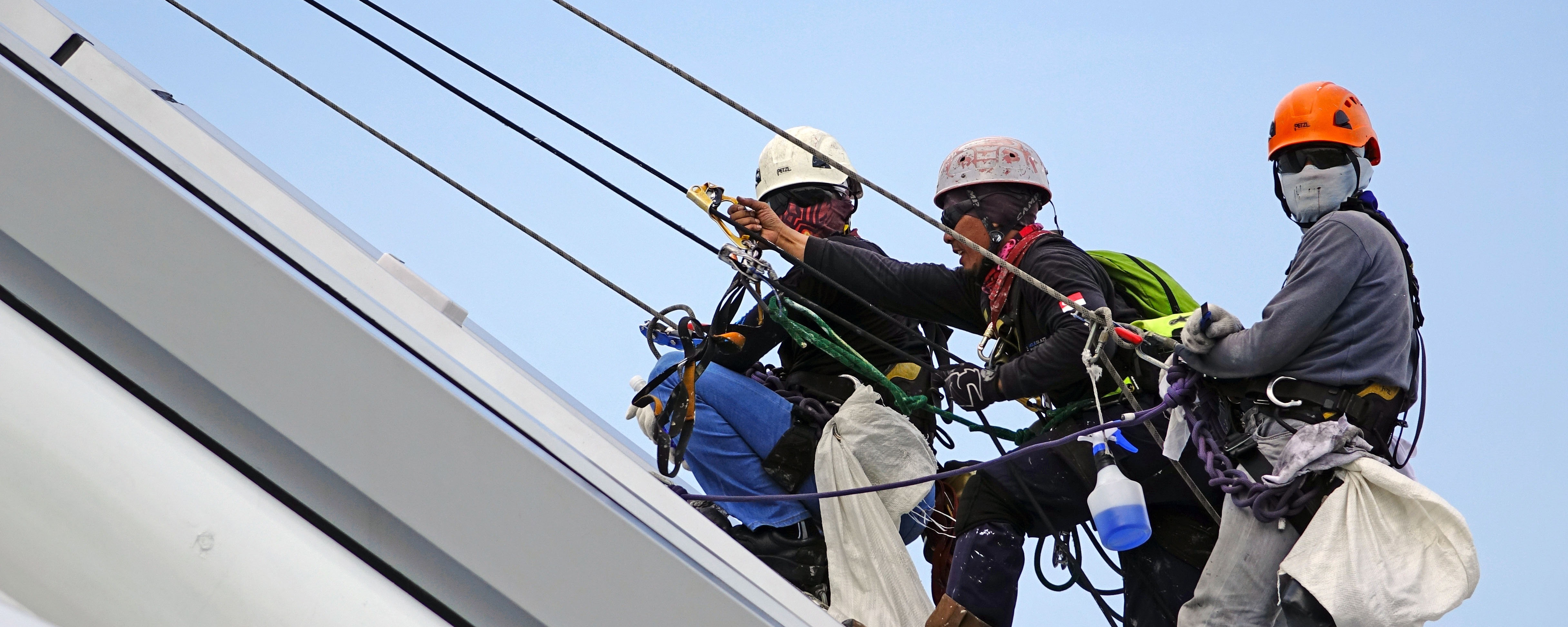
Ensuring the safety of employees working at heights is of the utmost importance. As a result, the OHS Vulnerability Measure, developed at the Institute for Work and Health (IWH), is used to measure the extent to which a worker may be vulnerable to occupational health and safety (OHS) risks at work. Keep reading for ways to determine the safety of employees working at heights, and trust ACUTE’s approved training program for relevant theory and hands-on practical training and evaluation facilitated by highly skilled and competent instructors.
![]()
How to Determine The Safety of Employees Working at Heights
Beyond the required training for employees who will be working at heights, here are a few ways to assess potential vulnerabilities and take preventative measures to avoid injury.
Workers Must Fill Out the Workplace Health and Safety Survey
According to the Institute for Work and Health, the OHS Vulnerability Measure assesses four areas: hazard exposure, workplace policies and procedures, worker awareness of hazards and OHS rights and responsibilities, and worker empowerment to participate in injury and illness prevention. Using the measure, “a worker is considered most vulnerable to injury and illness when exposed to hazards in the workplace in combination with inadequate workplace policies and procedures, low OHS awareness and/or a workplace culture that discourages worker participation in injury and illness prevention.”
The primary way that this information is gathered is through the workplace health and safety survey. There is a question in “Part 1: Workplace Hazards” that reads: “Work at a height that is 2 metres or more above the ground or floor.” You as one who works at heights can respond with one of the following:
- Never
- Once a year
- Every 6 months
- Every 3 months
- Every month
- Every week
- Every day
- Don’t Know / Not Applicable
The more frequently you are exposed to those working conditions, the more at risk you are to get injured. For more on that, read our article on “Health and Safety Statistics Working at Heights Ontario.” Be sure to download the survey and record your answers as soon as possible, if you have not already done so.

The Workplace Health and Safety Survey is a great tool for you and your employees.
Employers Need to Assess the Adequacy of Resources to Lessen the Effects of Hazard Exposure
Having determined that any employee who works at heights greater than two metres is considered vulnerable to injury, the Vulnerability Measure states employers must now determine if they have adequate access to resources designed to lessen the effects of being exposed: “If responses indicate vulnerability to work injury and illness in your workplace, you can explore them to determine the main driver(s) behind the vulnerability.”
It’s important, then, to ask the following questions to determine where there may be gaps in measures to ensure the safety of your employees working at heights.
- Are policies and practices inadequate?
- Is worker awareness of OHS rights and responsibilities low?
- Is worker empowerment to participate in the protection of their own health and safety poor?
The answers will help determine where to focus prevention efforts, so take some time to assess all of the above and make adjustments where necessary.

Guardrails are an essential feature of safely working at heights.
Employers Are Obliged to Put Preventative Measures in Place
If vulnerability is identified in your workplace, you as an employer need to take steps to ensure the safety of employees working at heights. According to the Ontario Ministry of Labour, Immigration, Training and Skills Development, workers are to be adequately protected by a guardrail system; if it is not reasonably possible to install guardrails, a worker must be adequately protected by at least one of the following methods of fall protection:
- safety net
- travel restraint system
- fall arrest system
- fall restricting system.
Additionally, the following organizations are available to help in improving your occupational health and safety program:
- Ontario Ministry of Labour, Immigration, Training and Skills Development – Health and Safety Division: www.labour.gov.on.ca/english/hs/index.php
- Ontario Ministry of Labour, Immigration, Training and Skills Development – Health and Safety Awareness Training: www.labour.gov.on.ca/english/hs/training/workers.php
- Occupational Health Clinics for Ontario Workers: www.ohcow.on.ca
- Workers’ Health and Safety Centre: www.whsc.on.ca
- Infrastructure Health & Safety Association: www.ihsa.ca
- Public Services Health & Safety Association: www.pshsa.ca
- Workplace Safety & Prevention Services: www.wsps.ca
- Workplace Safety North: www.workplacesafetynorth.ca
- Canadian Centre for Occupational Health & Safety: www.ccohs.ca
For a complete look at the OHS Vulnerability Measure, click here.

Make sure your employees are properly trained for working at heights.
Trust ACUTE For the Safety of Employees Working at Heights
With over 100 years of combined industry experience, you can trust that with ACUTE, you will experience only the best comprehensive, hands-on Working At Heights training. Here are some ways that ACUTE goes beyond government compliance in Ontario health and safety training.
- Open Door Instructor-Student Partnersh
 ip: ACUTE’s training services emphasize client participation. Staff foster relationships with clients and serve as a touchstone for advice moving forward.
ip: ACUTE’s training services emphasize client participation. Staff foster relationships with clients and serve as a touchstone for advice moving forward. - Serving Your Team and Industry: With a vast array of clients in the manufacturing, construction, health, academic, and government sectors, ACUTE brings the best safety practices from across the spectrum to your workplace.
- Over 100 Years Combined Experience: ACUTE provides comprehensive health and safety training, on-site safety services, and consulting services. With over 100 years of combined experience, our staff offers more than theoretical or abstract ideas. ACUTE offers solutions.
- Track Record of Success: ACUTE is rated 4.9/5 stars on Google reviews, demonstrating a commitment to our clients, quality, and a passion for training.
Contact us today for quality training in your workplace or on-site at ACUTE’s proven training facilities!
“For over 20 years, Ron Campbell and the professional team at Acute has helped us develop a continuously improving safety program customized to our unique needs in environmental testing and renewable energy services. We are proud of our safety culture and record supported by Acute training services.”
– Hank, Environmental Consulting Company
Read more testimonials here.
Sources:
https://www.labour.gov.on.ca/english/hs/pubs/liveperformance/gl_live_heights.php
https://www.iwh.on.ca/tools-and-guides/ohs-vulnerability-measure


